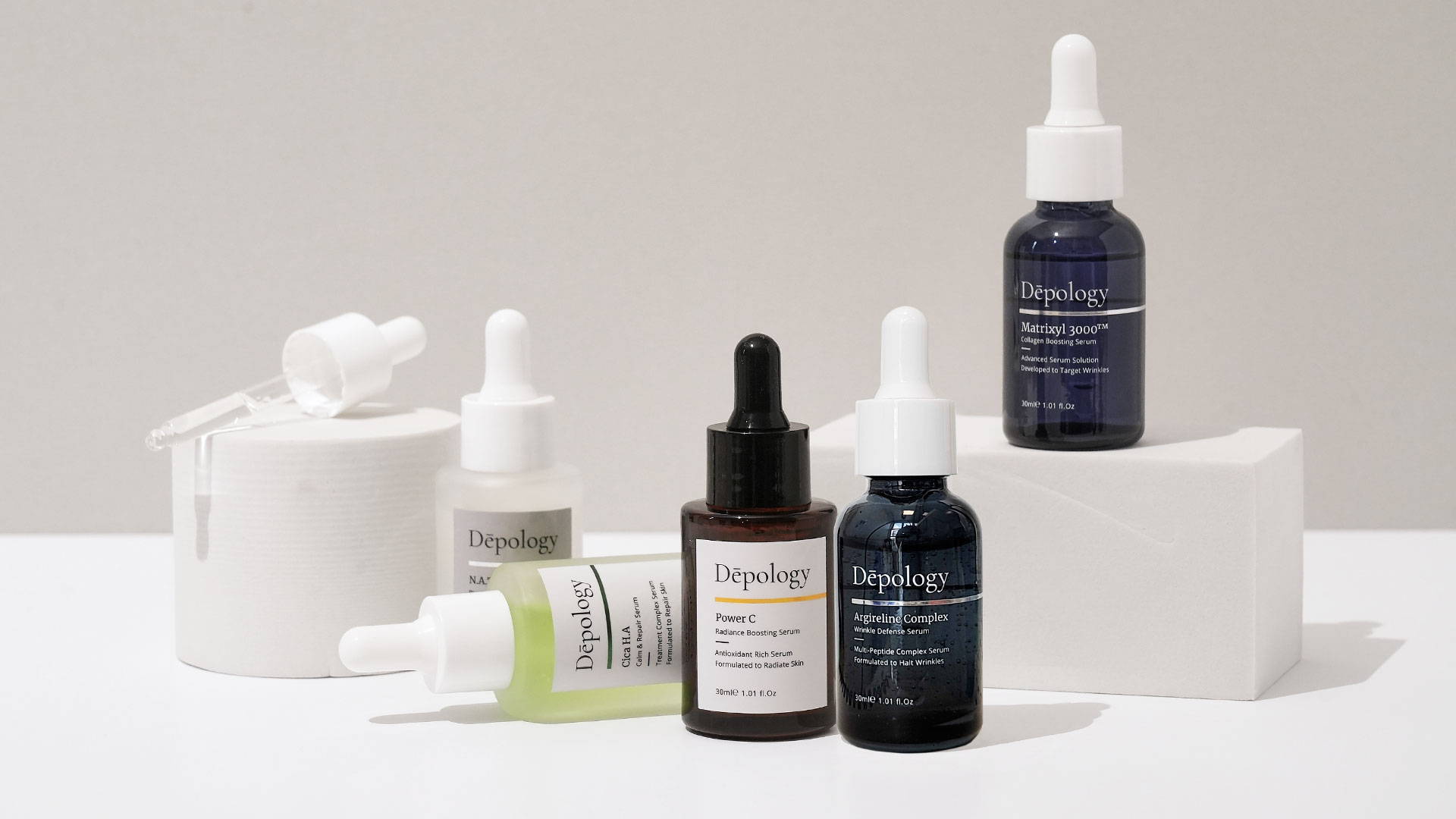
Acids In Skincare: Dos and Don'ts
When it comes to skincare, acids can sometimes seem daunting. Introducing acids into your skincare routine can be a great way to treat a variety of skin-related concerns, such as acne, dryness, and wrinkles. But it's important to know the dos and don'ts of using acids in your skincare routine to get the most out of the products you use! Not every acid plays nice with other ingredients. In this post, we'll explore the essentials of acids in skincare so you can kickstart your journey to healthier, more radiant skin.
What Are Acids In Skincare?
Acids in skincare are not just found in chemical peels but in many other skincare products. Acids are naturally occurring substances and can be both natural and synthetic. Different types of acids in skincare offer different effects, such as exfoliation, intense hydration, brightening, and anti-aging. Alpha and beta hydroxy acids, for example, are effective for exfoliating dead skin cells, while hyaluronic acid is a potent hydrator.
What Are The Different Types Of Skincare Acids?
When discussing skincare acids, there are many different types to consider. The primary two forms are AHAs and BHAs, discussed in more detail below.
AHAs
Alpha hydroxy acids (AHAs) are the most commonly used acids in skincare products. AHAs are a group of acids derived from sugar cane, apples, oranges, and other plant sources. AHAs work by loosening the bonds between the surface of your skin and the uppermost layer of skin cells, causing the top layer of cells to slough off and reveal the fresh, glowing skin beneath. Benefits of using AHAs include brighter, plumper skin, diminished appearance of wrinkles, reduction of acne and acne scars, and faster cell turnover.
You've likely heard of some of the most common AHAs:
- Glycolic Acid: Glycolic acid is derived from sugar cane that is often used in skincare products to exfoliate skin and boost cell turnover. Glycolic acid also helps to reduce the appearance of wrinkles, age spots, and other signs of aging. It is one of the most popular AHA treatments due to its ability to penetrate deep into the skin and leave behind a healthy glow. Benefits of using glycolic acid include brighter, smoother skin, reduced fine lines and wrinkles, and improved hydration.
- Lactic Acid: Lactic acid is derived from milk and is often used in skincare products to exfoliate and brighten skin. Lactic acid is known for its hydrating properties, which helps to keep skin soft, plump, and glowing. It is also effective in reducing the appearance of wrinkles and age spots. Benefits of using lactic acid include improved texture and tone, fewer wrinkles, and reduced hyperpigmentation.
- Mandelic Acid: Mandelic acid is derived from almonds and is often used in skincare products to exfoliate skin and boost cell turnover. It is a much gentler exfoliator than other AHAs, making it a great option for those with sensitive skin. Mandelic acid has calming properties and is also effective in treating discoloration and evening out skin tone. Benefits of using mandelic acid include brighter and smoother skin, improved hydration, and reduced hyperpigmentation.
BHAs
Beta hydroxy acids (BHAs) are less commonly used but are powerful exfoliants that can penetrate deep into the pores to clear out bacteria and debris. BHAs are a group of acids made from the same plant sources as AHAs but with a lower pH level. BHAs are primarily used to treat acne and oily skin due to their ability to penetrate deeper into the skin than AHAs. BHAs are particularly effective for blackheads and whiteheads, as well as inflamed, swollen pimples. Benefits of using BHAs include decreased acne and improved texture and tone of skin.
The most common BHA is salicylic acid, a type of beta hydroxy acid derived from willow bark that is often used in skincare products to reduce breakouts and reduce inflammation. Salicylic acid penetrates pores and helps to dislodge trapped debris and oil, making it a great option for those struggling with acne. Benefits of using salicylic acid include fewer breakouts, diminished redness, and smoother skin.
What Are The Dos And Don'ts Of Acids?
The dos and don'ts of using acids in skincare are essential to understand before beginning any skincare routine involving acids. If you use too much or combine them with the wrong ingredient, you could irritate your skin. We've listed out our best dos and don'ts below.
Do: Use The Right Acid For Your Skin Type
It is also important to ensure that you are using the right type of acid for your skin type. Those with sensitive skin should use gentler acids like mandelic acid, while those with oilier skin may benefit from using salicylic acid. To be safe, patch test any product before applying it to your skin.
Don't: Use Too Much At A Time
It is important to note that acids should be used sparingly and in low concentrations in your skincare routine. Applying too much or too high of a concentration can cause adverse side effects such as redness, stinging, and dryness. Make sure you apply using the methods listed on the product packaging. Additionally, avoid harsh, abrasive cleansers or scrubs when using acids, as this can cause irritation.
Do: Always Pair Acids With SPF
Always wear sunscreen when using acids as they can make your skin more sensitive to UV rays. We recommend using SPF 30 or higher to prevent sun damage, which can speed up the aging process and cause many other issues.
Don't: Mix Acids With The Wrong Ingredients
When using skincare products with acids, it is important to avoid mixing them with other ingredients or products that can cause irritation. Avoid mixing acids with scrubs or other exfoliants, as this can cause skin sensitivity or even further dryness. Additionally, avoid using too many different types of acids together, as this can also lead to irritation. To minimize the risk of irritation, stick to one type of acid and use it accordingly as directed. We'll go into more detail about what you shouldn't mix certain acids with below.
Do: Moisturize After Each Use
It is important to always moisturize after each use of an acid-based skincare product, as acids can cause dryness and irritation. Applying a moisturizer helps to restore the skin's natural hydration levels while protecting it from further damage. It will help to retain moisture and keep skin looking soft and supple.
Which Acids Can't Be Mixed Together?
It is important to be aware of which acids cannot be mixed together, as certain combinations can be irritating to the skin. For example, AHAs and BHAs generally should not be mixed, as this can cause skin irritation. This includes lactic acid and salicylic acid. Some products contain both AHAs and BHAs, but these products are safe to use since they have been specially formulated with safe concentrations. AHAs should not be mixed with retinol, and BHAs should not be used with benzoyl peroxide, as this can also cause irritation. Once again, always read the instructions on skincare products before using them.
The Final Verdict
Acids in skincare can offer a variety of benefits, from exfoliation to anti-aging. However, it is crucial to use acids with caution and know their dos and don'ts. By following the guidelines above and using the right type and amount of acid for your skin type, you can achieve a beautiful and balanced complexion. Be sure to take extra care when using acids, as they can cause skin sensitivity and irritation. With the right approach, acids can effectively treat skin concerns and ultimately improve how you look and feel.













